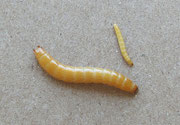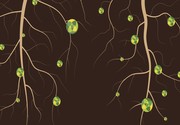| |
| |
 |
 |
| |
 |
|
@{mv_date_MMM d, yyyy}@ |
|
| |
 Harvest of major crops continues to outpace five- and 10-year averages in the Prairie provinces, with relatively little rain to hinder progress and no major frost events reported as of yet.
» Read more...
Harvest of major crops continues to outpace five- and 10-year averages in the Prairie provinces, with relatively little rain to hinder progress and no major frost events reported as of yet.
» Read more...
Available for fall 2022, the VT-Flex 435 offers simple, variable gang angle adjustments, allowing producers to meet the soil management needs of any field with greater flexibility and precision.
» Read more...
A post-harvest weed control strategy targets perennial and winter annual weeds to prevent them from stealing early season moisture. Use this searchable guide to select herbicide options for post-harvest weed control.
» Read more...
|
| |
 |
 |
| |
|
| |

How do you slow the conversion of ammonium and minimize nitrogen leaching beyond the root zone? The answer is CENTURO®: a next-generation nitrogen stabilizer proven to give growers greater flexibility and protection while being gentle on anhydrous ammonia equipment. It’s crucial to protect spring-applied anhydrous. With the right plan in place, you can set yourself up for success. Keep reading to get other helpful tips about guarding your nitrogen investment.
» TRY NOW |
| |
|
| |
 Wireworms are a particularly pesky pest on the Prairies. While there are chemical control options, there hasn’t been a pesticide capable of killing them since the PMRA cancelled registration of lindane in late 2004 – which changed with the registration of broflanilide in November 2020. But Haley Catton, an entomologist with AAFC-Lethbridge, says a lack of information on the pest is the real challenge.
» Learn more
Wireworms are a particularly pesky pest on the Prairies. While there are chemical control options, there hasn’t been a pesticide capable of killing them since the PMRA cancelled registration of lindane in late 2004 – which changed with the registration of broflanilide in November 2020. But Haley Catton, an entomologist with AAFC-Lethbridge, says a lack of information on the pest is the real challenge.
» Learn more |
| |
 A new tool on the horizon for fighting Sclerotinia stem rot in canola is continuing to show promise. InnoTech Alberta, a subsidiary of Alberta Innovates and the province’s largest research and innovation agency, is currently looking for a commercialization partner for the tool which utilizes nanotechnology to detect Sclerotinia spores that threaten canola crops, developed by researcher Susie Li.
» Learn more
A new tool on the horizon for fighting Sclerotinia stem rot in canola is continuing to show promise. InnoTech Alberta, a subsidiary of Alberta Innovates and the province’s largest research and innovation agency, is currently looking for a commercialization partner for the tool which utilizes nanotechnology to detect Sclerotinia spores that threaten canola crops, developed by researcher Susie Li.
» Learn more |
| |
|
| |
 All crops require sulfur to varying degrees, but plants can only absorb it in the form of SO₄²⁻. Sulfate fertilizers are readily plant-available, but can leach through soil. Elemental sulfur is not plant-available and must be oxidized before it can be used by plants. The smaller the particle size, the more quickly it can oxidize: that’s the concept behind Nutrien’s Smart Nutrition MAP+MST.
» Learn more...
All crops require sulfur to varying degrees, but plants can only absorb it in the form of SO₄²⁻. Sulfate fertilizers are readily plant-available, but can leach through soil. Elemental sulfur is not plant-available and must be oxidized before it can be used by plants. The smaller the particle size, the more quickly it can oxidize: that’s the concept behind Nutrien’s Smart Nutrition MAP+MST.
» Learn more... |
| |
|
| |
|
|
| |
| |









